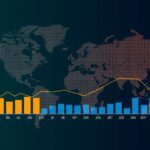Long-Term Holders Drive Bitcoin Recovery Amid Short-Term Market Exits
Summary
Bitcoin has experienced a recent price rebound, supported by rising accumulation from long-term holders, while short-term investors have exited amid market volatility. This shift reflects a growing confidence among long-term investors, despite the risks posed by ongoing fluctuations. Key performance indicators suggest potential for sustained bullish momentum, contingent upon market behaviors and overall investor sentiment.
The recent rebound in Bitcoin prices can be largely attributed to a significant increase in the accumulation of holdings by long-term investors. Following a period of volatility and profit-taking, short-term investors have largely exited the market, as reflected by recent fluctuations in trading behavior. Bitcoin’s trading performance on the daily chart indicates a resurgence of bullish momentum, bolstered by increased trading volume alongside positive indicators such as the Moving Average Convergence Divergence (MACD) and the Relative Strength Index (RSI). At present, Bitcoin (BTC), the leading cryptocurrency by market capitalization, is transitioning through a correction phase after failing to meet expectations during the second quarter and nearing the end of the third quarter of 2024. The latest trading value of Bitcoin is approximately $56,994, reflecting mild intraday fluctuations and recovery from a support level of $53,489 observed just three days prior. BTC’s market capitalization has increased by 3.56% within the same timeframe. Additionally, the fear and greed index suggests a shift towards improved market conditions, moving from a fear level of 26 to 33, implying a growing readiness among investors to assume risks and engage in purchasing Bitcoin. Despite the recent market volatility, data from CryptoQuant reveals a notable reduction in short-term holders’ net positions, indicating that these investors are exiting the market, likely to secure profits or mitigate losses. In contrast, long-term holders are actively accumulating Bitcoin, signaled by an increase in their net positions, which is generally seen as a promising indicator of market stability and confidence. This accumulation supports the theory that long-term investors perceive current price levels as favorable for future growth potential. Such activity by long-term holders could pave the way for a more stable market, though continued sell-offs by short-term holders may exert downward pressure on Bitcoin prices. Following the impacts of Japan’s mini-crisis on August 5, 2024, the NVT Golden Cross has continued to form higher lows, suggesting a possible trigger for significant price movement ahead. According to analyst @burakkesmeci’s insights on CryptoQuant, there is a strong likelihood for upward price momentum, although the prevailing pattern also retains potential for a sharp downturn. Analysis of Bitcoin’s daily chart reveals bullish activity commencing from the $53,489 support level. As of the current analysis, Bitcoin’s price has approached the 20-day Exponential Moving Average (EMA) threshold. Trading volume has surged by an impressive 40%, translating to an inflow of $33.78 billion within a day. A sustained increase in volume might enable the price to surpass both the 20-day and 50-day EMA bands, while confidence in long-term bullish trends hinges upon stability above the 200-day EMA band. Presently, the MACD signals a nearing convergence, with the histogram hinting at decreasing bearish pressures. The RSI has crossed above the median line, indicating movement toward overbought territory. Key resistance levels are positioned at $60,278 and $66,150, with support levels identified at $53,489 and $51,476.
Bitcoin (BTC) has emerged as the leading cryptocurrency by market capitalization, often regarded as a barometer for the broader crypto market. Following a lackluster second quarter and extending into a correction phase, Bitcoin’s price has experienced fluctuations driven by investor sentiment and market dynamics. Long-term holders tend to represent a more stable segment of the investment community, often accumulating assets during periods of price declines, which can create upward pressure on prices during rebounds. In contrast, short-term traders capitalized on recent volatility, resulting in significant liquidations and market exits, which plays a pivotal role in determining overall market sentiment and Bitcoin’s future performance. Understanding these shifts is crucial for predicting potential recovery patterns in the cryptocurrency market.
In conclusion, the recent price rebound of Bitcoin has been significantly influenced by increased accumulation among long-term holders, contrasting with the exit of short-term investors responding to market volatility. While Bitcoin’s current momentum appears to be bullish, as indicated by rising trading volumes and positive oscillator indicators, the potential for short-term market pressures remains. The outlook for Bitcoin will hinge on the ongoing behavior of both long-term and short-term holders, which will ultimately influence price stabilization and future growth. Analysts remain cautiously optimistic, noting key resistance and support levels that could dictate the cryptocurrency’s directional movement in the near term.
Original Source: themarketperiodical.com








Post Comment